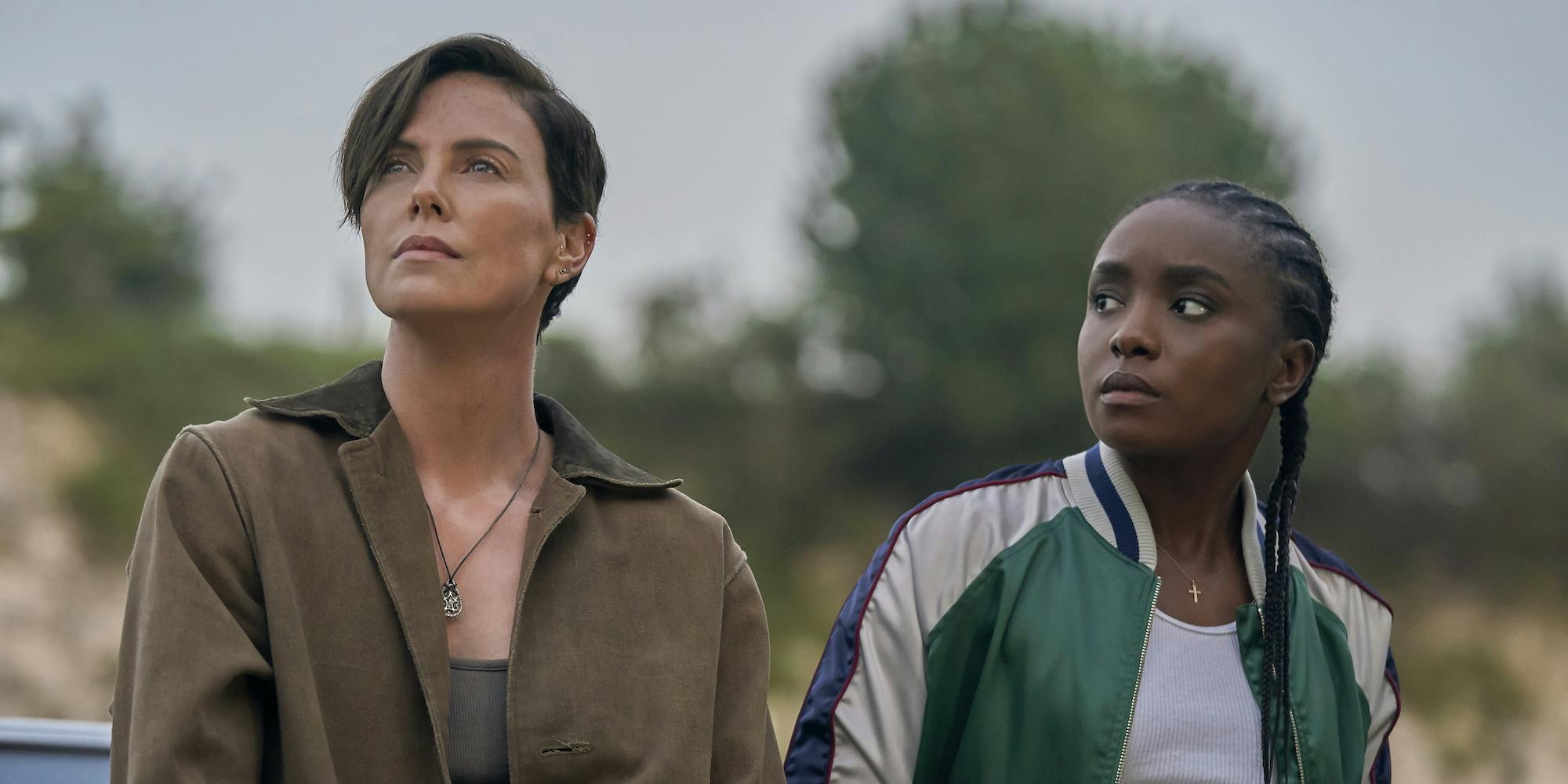With a $200-million budget and three A-list stars, Red Notice is (allegedly) Netflix‘s most-watched original movie.
It also made no discernable cultural impact, emphasizing the murky nature of what popularity looks like for a Netflix blockbuster.
Reuniting Dwayne Johnson with director Rawson Marshall Thurber (Central Intelligence; Skyscraper), Red Notice is a glitzy but poorly-reviewed heist caper co-starring Ryan Reynolds and Gal Gadot. Two sequels are now in development. These details—budget, casting, reviews, sequel announcements—are straightforwardly quantifiable. But have you ever heard a living human being proclaim their passion for Red Notice, in the same way that Marvel movies inspire fever-pitch excitement? Is there a widespread outcry to deliver those sequels? In a distribution model where profits are murky and audience retention is key, this lack of enthusiasm seems like it should be a problem.
In the old-fashioned model of theatrical distribution, financial success is easy to parse. If a movie sells enough tickets, it’s a hit. But while some Netflix films do receive a theatrical release, ticket sales aren’t the ultimate goal. Like Uber or Airbnb, Netflix is an investor-funded tech company. Its strategy is to disrupt a pre-existing industry, gaining as many subscribers as possible until (in theory) it makes a profit. So far, that last part hasn’t happened.

In recent years, Netflix has launched a slew of expensive, star-studded action/adventure movies, often touted as huge hits due to their impressive viewing numbers. For instance, the Chris Hemsworth vehicle Extraction attracted 99 million views in its first four weeks—an admittedly nebulous statistic, because until October 2021, a “view” counted anything above two minutes of watch time. Since then, the platform has shifted to informing shareholders of “hours-viewed” counts, which is how Red Notice’s popularity was measured: 364 million viewing hours. 2022’s similarly-expensive The Gray Man clocked in at a mere 253.9 million, for what it’s worth. (If these figures are already starting to swim before your eyes, I sympathize.)
Independent trackers like Nielsen have confirmed Red Notice’s placement in the streaming charts, but there’s a big “however” hanging over this ratings success. If we were talking about, say, The Power of the Dog or Roma, it would feel crass and absurd to use viewership data as a measure of intrinsic worth. Those movies are artistic ventures. However, Red Notice and The Gray Man exist at the opposite end of the filmmaking spectrum, engineered explicitly to make a profit.
It makes perfect sense to spend $200 million on a derivative Dwayne Johnson action flick if it earns $600 million at the box office. Less so if the main return on investment is “364 million viewing hours.” Netflix only recently introduced an ad-supported tier (the vintage method of passively profiting from eyeballs on screens), and in a general sense, the company’s main goal is to attract and retain subscribers. Viewing hours are less important than subscriber numbers, and it’s unclear whether films like Red Notice and The Gray Man are a meaningful draw. Netflix doesn’t reveal that kind of internal information, and judging by the lackluster public response to Netflix blockbusters, it’s easy to have doubts.
What makes a Netflix blockbuster?
Considering Hollywood’s obsession with franchise branding and fandom, Netflix’s blockbuster strategy is somewhat puzzling. While the platform’s biggest TV hits have memorable brands and characters (Stranger Things; Squid Game; Bridgerton), its big-budget action movies are aggressively generic, hiring A-list talent (Johnson, Hemsworth, Chris Evans, Ben Affleck) to star in bland knockoffs of better-known, better-loved material. No one is out there stanning any of the characters from Red Notice. Hell, there’s no such thing as a recognizable Red Notice meme.
Despite their frequent placement at the top of the streaming charts, these films vanish quickly from the public consciousness. People simply do not talk about Spenser Confidential or 6 Underground the way they talk about Stranger Things—although in the case of Extraction and The Gray Man, there’s more at play than meets the eye. Both movies co-star popular Indian actors as part of a concerted effort to attract South Asian subscribers, similar to the way Netflix has targeted the South Korean TV market.
Basically, very few of Netflix’s blockbuster attempts have anything resembling a fanbase. While The Witcher and Bridgerton have passionate, actively engaged audiences, Netflix’s blockbusters resemble bargain-bin DVD fare; the kind of movie you watch with 25% of your brain capacity and then forget forever. They aren’t widely discussed on social media, beyond their first few days of release. Their characters aren’t recognizable enough to provide fodder for jokes on late-night TV. They don’t inspire much fan art, fanfiction, or TikTok fan theories. Culturally speaking, they barely exist.
There are only two notable exceptions in this sea of forgettability. One is the zombie movie Army of the Dead, which garnered a lot of social media buzz thanks to the fandom around director Zack Snyder.
The other exception is The Old Guard.
How The Old Guard became Netflix’s hottest action movie
Based on a comic by Greg Rucka and Leandro Fernandez, The Old Guard is a superhero-adjacent action thriller about a team of immortal warriors. Kiki Layne stars as the team’s newbie, a U.S. marine, while Charlize Theron plays the axe-wielding leader. In many ways, it’s a straightforward mid-budget action flick, but from a fandom perspective, it’s dynamite.
The Old Guard’s ensemble cast leans into the ever-popular found family trope. Its casting choices are also notable, placing a Black woman in the foreground of an international team that includes a gay couple (Yusuf and Nicolò) with centuries of backstory.

This kind of character-driven concept is catnip for transformative fandom (i.e. fanfic writers and fan artists), making The Old Guard a huge hit on Archive of Our Own and Tumblr, where it was the #2 movie of 2020. (If you go by Netflix streaming stats, it attracted 78 million views in a month; about the same as Army of the Dead, Enola Holmes, and the Jamie Foxx superhero movie Project Power.)
“The Old Guard is far closer to Our Flag Means Death on the sliding scale of demographic appeal,” explained Old Guard fan nicojoe in an email to the Daily Dot, highlighting the film’s popularity in transformative fandom. “Netflix has no idea what to do with that. I remember reading an article about how Ted Sarandos apparently thinks IMDb stats are a good indicator of fandom engagement—he really hasn’t the slightest clue about where the passionate fans actually congregate online.”
Describing The Old Guard as “what I wanted from Marvel but will NEVER get from them,” nicojoe emphasized the amount of in-depth discussion taking place within the fandom: Religious history experts discussing Yusuf and Nicolò’s backstory, analysis of the film’s gender roles, and so on.
Like Bridgerton, The Old Guard diversifies a traditionally conservative genre. When I reached out to fans online, a Twitter mutual, Rae, put it simply: “Obviously, it’s the canon unkillable queer characters. It’s really comforting to watch it and see a queer couple unapologetically love each other… and to know they’re going to survive to the end of the movie.”
A sequel was announced in January 2021, but thanks to a perceived lack of promotion from Netflix, fans were concerned it might languish in development hell. Realizing that Netflix might not be aware of the movie’s popularity, a fan named Bird decided to encourage more activity on Twitter—a more visible platform than The Old Guard’s fandom home on Tumblr. They launched a “Twitter takeover” involving viewing parties and hashtag campaigns, telling the Daily Dot, “If I’ve learned anything from running these events it’s that Netflix marketing is messy and in need of a major makeover.”
From the outside, The Old Guard is an interesting illustration of Netflix’s muddled metrics of success. By the platform’s own viewing stats, it had similar audience numbers to other films in the same range of budget and star power. This was enough to warrant a sequel, which wrapped production in September 2022. But there’s little sign that Netflix insiders understand The Old Guard’s cult following—or see it as something to seek out in other projects. The passionate levels of audience engagement don’t seem to matter.
Netflix’s new blockbuster strategy
It’s no secret that Netflix is beginning to struggle. The service lost over a million subscribers in the first half of 2022, foreshadowing a drop in stock value, mass layoffs, and a strategic pivot that echoes the behavior of Hollywood studios like Disney and Warner Bros. In the fall, though, the company reported that it gained 2.4 million subscribers.
Instead of targeting critical acclaim with projects like Marriage Story, CEO Ted Sarandos now wants to prioritize “big event films” like The Gray Man and the Knives Out sequel Glass Onion. The three movies Sarandos singled out as recent success stories were Red Notice, Don’t Look Up (which cost a modest $75 million), and the kid-friendly blockbuster The Adam Project ($116 million).
As David Sims put it in The Atlantic, “Netflix’s overarching goal is clearly to make huge movies that become part of the zeitgeist.” However: “Is The Adam Project part of the zeitgeist? How would we even go about measuring its influence?” Netflix is doubling down on its plan to compete with beloved franchises, but there’s no real evidence that it’s capable of doing this.
When Netflix execs announce their latest success stories, there’s a lingering sense that someone is fudging the numbers. If a $100-million movie is “viewed” 100 million times, or for 250 million hours total, what does this actually mean? Do these figures correlate to an increase in subscribers or brand loyalty? Despite all that star power, it feels ridiculous to compare something like The Gray Man to Mission Impossible or Wonder Woman or The Bourne Identity. Netflix blockbusters films are pop-culture phantasms. If they’re part of the zeitgeist, it’s only for a week or two—and that’s not the kind of success that makes people stick around.


